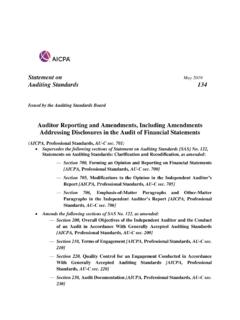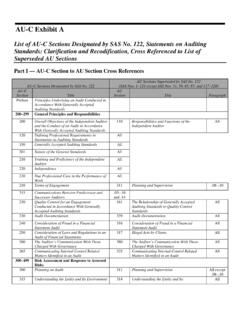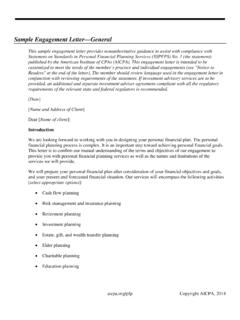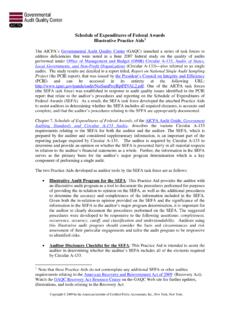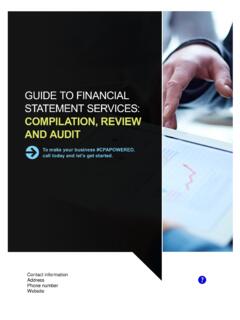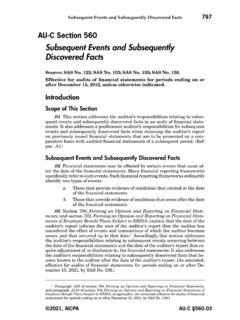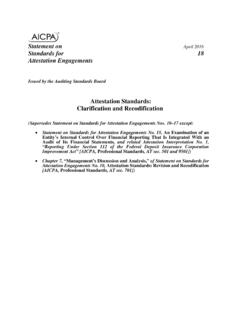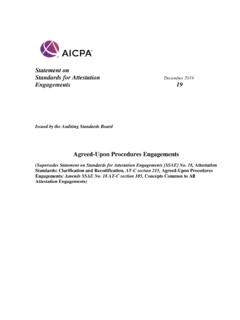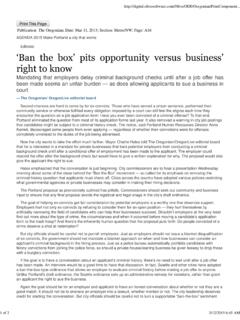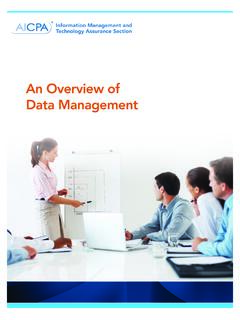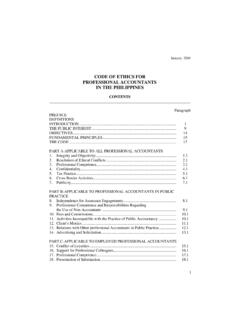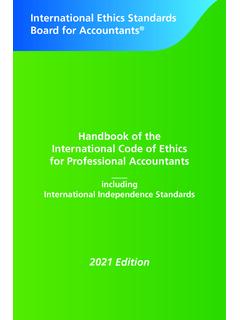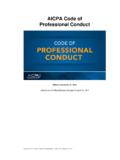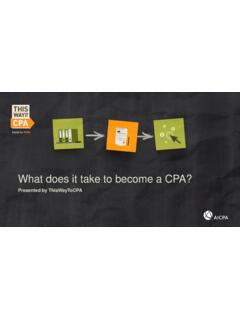Transcription of 2019 Accounting Graduates Supply and Demand Report
1 012019 trends REPORTSECTION 01 INTRODUCTION2019 Tr e n d sin the Supply of Accounting Graduates and the Demand for public Accounting recruits022019 trends REPORTSECTION 01 INTRODUCTIONBy the Association of International Certifi ed professional accountants ARC Research, an SVC CompanyCopyright 2019 Association of International Certifi ed professional accountants . All rights for permission to make copies of any part of this work should be mailed to:Permission Department, The Association, 220 Leigh Farm Road, Durham.
2 NC 27707-81101234567890 ACD920012019 trends REPORTSECTION 01 INTRODUCTION02060818273134 IntroductionA letter from the AICPA s Academic-in-ResidenceInterpreting the dataKey insightsSummaryTrends in the Supply of Accounting graduatesSupply | EnrollmentSupply | GraduatesTrends in the Demand for public Accounting recruitsDemand | New hiresDemand | Future fi rm demographicsUniform CPA Examination AppendixCPA pipeline programs Methods EndnotesTable of Contents022019 trends REPORTSECTION 01 INTRODUCTIONA message from the AICPA s Academic-in-ResidenceThank you for your interest in the 2019 trends in the Supply of Accounting Graduates and the Demand for Public Accounting Recruits Report .
3 This biennial Report identifi es key trends in Accounting enrollments and graduations as well as hiring of new Graduates in the public Accounting sector. Published since 1971, trends provides statistical projections and respondent expectations based upon university responses for the 2017-2018 academic year and fi rm responses for the 2018 calendar Accounting profession is rapidly evolving. Technological innovations, especially in data science and analytics, are becoming a more common part of the profession and are changing the way we do business and whom we hire to do it.
4 The fi ndings in this Report refl ect those changes. The responses received from participating universities and public Accounting fi rms provide us with insights into how these changes are impacting the profession from both a Supply and a Demand perspective. This data, against the backdrop of the current macroeconomic environment which impacts college enrollment levels, choice of major, and hiring levels provides us a snapshot of the profession in time and allows us to forecast future bachelor s Accounting enrollments are the second highest on record since the inception of our trends Report .
5 While there was a 4% decline from the 2016 number, they remain higher than 2014 levels. Master s and enrollments continue to decline (6% and 23%, respectively), with many opting to enter or remain in the workforce in lieu of pursuing an advanced Accounting degree or to pursue other avenues for advanced education. As mentioned in the last trends Report , the previous infl ux of graduate students we saw may have been infl uenced by the Great Recession of 2008. We could be seeing an impact from both economic conditions and an expansion of the alternatives available to potential graduate Accounting more telling projections in this Report about the profession come from the Demand side in public Accounting .
6 New hires assigned to audit-related services increased 4 percentage points. Across the last two trends reports, we have experienced an approximate 30% decline in hiring of new Accounting Graduates . The marketplace continues to Demand different competencies and, while Accounting Graduates are still being hired, fi rms are seeking other skill sets to expand services. We are seeing that the gap in skills required in the profession, especially as it relates to technology needs, is being met with non- Accounting Graduates .
7 There is also anecdotal evidence to suggest that some of this technology-specifi c hiring is occurring at the experienced hire a signifi cant increase in the number of new CPA Exam candidates in 2016, largely attributed to the new version of the exam launching in 2017, the number of candidates in 2018 dipped to its lowest level in 10 Hinson, CPA, CGMA, in Residence, Academic & Student EngagementAssociation of International Certifi ed professional Accountants032019 trends REPORTSECTION 01 INTRODUCTIONThe increase in non- Accounting graduate hiring and the decline in new exam registrants present areas of opportunity.
8 The AICPA has been working with key stakeholders on a number of profession-wide initiatives that attract, inspire, and engage the next generation of initiatives include the CPA Evolution project in partnership with the National Association of State Boards of Accountancy. The goal of this project is to ensure that CPAs continue to have the competencies needed to support an Accounting profession that plays a critical role in protecting the public interest. We believe that for CPAs to continue to serve the marketplace, they must incorporate new and different skill sets and that it is incumbent upon the profession to take steps to cultivate these rapidly changing skills in Accounting Graduates and newly licensed CPAs.
9 On a parallel effort, we have been working with universities to deepen the connection between practice and academia to better incorporate the skills of the future into current curricula and bring more CPAs into the classroom. The Accounting Accreditation Practitioner Engagement Program, which places CPA practitioners on Association to Advance Collegiate Schools of Business (AACSB) Accounting accreditation committees and peer review teams, and the Accounting Doctoral Scholars Program, which provides funding for CPAs to obtain their doctorates and ultimately teach, are helping to bridge the gap between practice and academia.
10 To ensure a diverse and robust pipeline of talent enters the profession, we have expanded our awareness efforts at the high school level. The AICPA Accounting Program for Building the Profession trains high school educators to teach a higher order college-level Accounting class and increases students knowledge about the Accounting profession. We are working in collaboration with the National Academy of Finance, Junior Achievement, and organizations such as the National Association of Black accountants and the Association of Latino Professionals for America to increase the likelihood that students from a multitude of backgrounds consider Accounting a viable option early in their career decision-making process.
